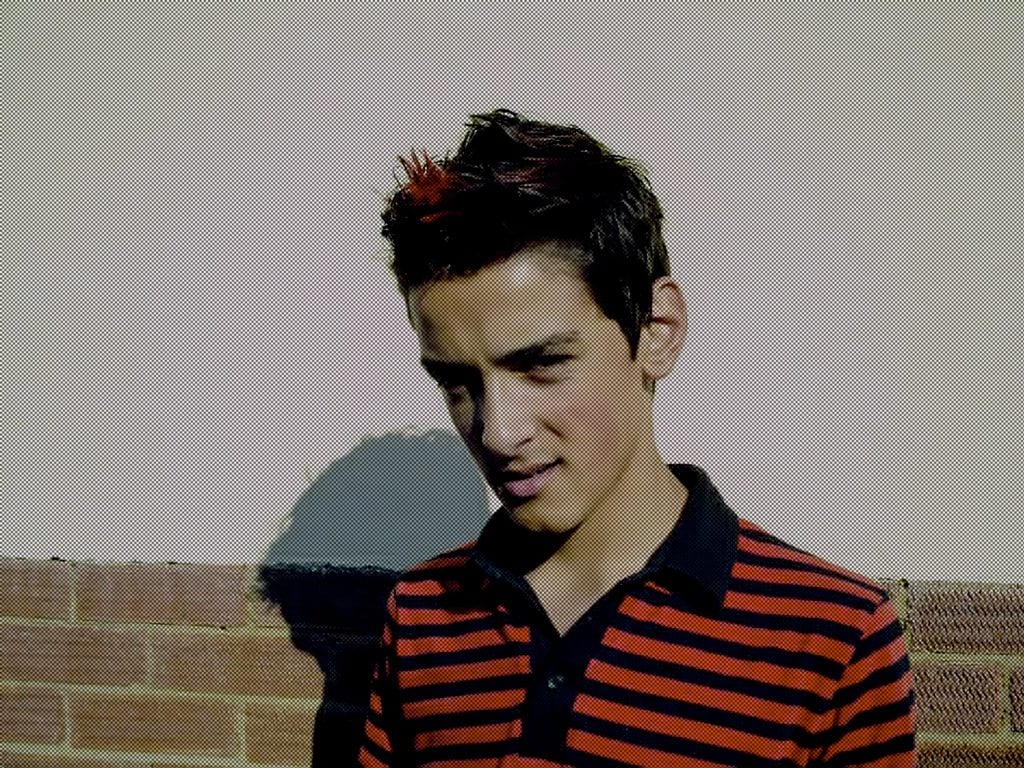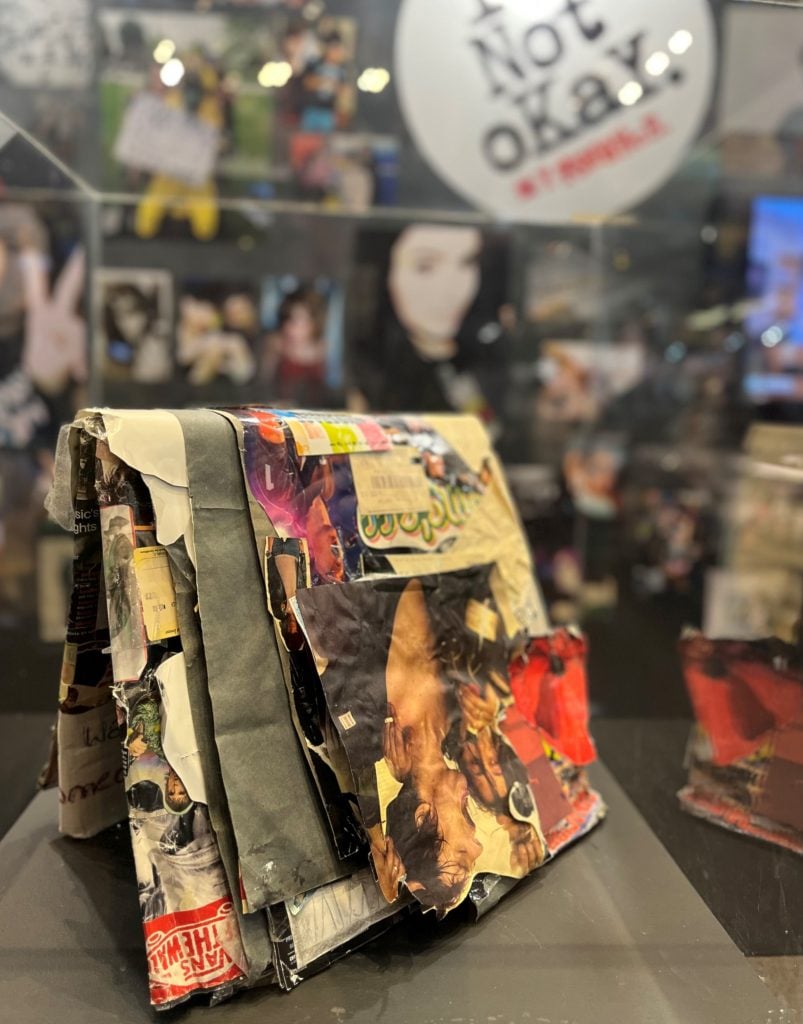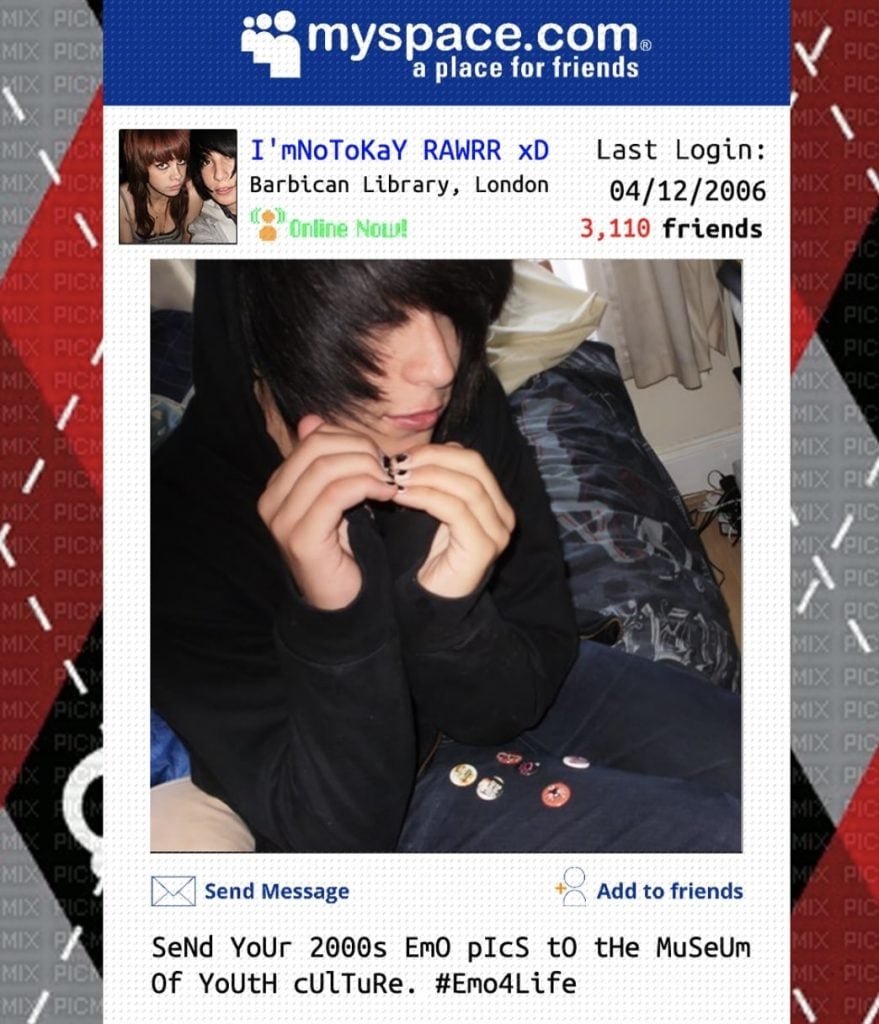Art & Exhibitions
The Barbican Goes Full Emo in a Show Revisiting a Long-Lost 2000s Subculture
"I'm Not Okay," which takes its name from a My Chemical Romance Song, features a trove of fan donations.

In the mid-2000s, young people on both sides of the Atlantic were swept up in a subculture of melancholy. Its driving force was bands with names like Bring Me the Horizon, My Chemical Romance, and Bury Tomorrow, guitar-led groups whose open-hearted lyrics gave the movement its name: emo, short for emotional.
Fair or not, the emo scene’s reputation was of mop-haired teenagers who were greatly aggrieved with the perceived ills of suburban life. To be sure, there’s nothing revolutionary about a new generation expressing its dismay with state of the world. But, in many ways, the emo scene straddled the past and the future like none before.

A scrapbook of emo images sent in by a fan for the Barbican exhibition. Photo courtesy Andrew Buckingham.
Its sound was a watered-down rehash of 1990s grunge and hardcore, its ethos took something from the DIY spirit of punk, and elements of its fashion winked at Victorian dress. At the same time, emo emerged at the dawn of a new millennium and its tools of expression were online and digital. Fans met online as well as in the mosh pit and took music with them on MP3 players and iPods.

A display case featuring items from the era’s popular bands. Photo courtesy Andrew Buckingham
This is the subject of “I’m Not Okay: An Emo Retrospective,” an exhibition stationed inside the Barbican Music Library and organized in collaboration with the Museum of Youth Culture. The show name is the title of an early My Chemical Romance song—here’s an angsty sample: “You wear me out / What will it take to show you / That it’s not the life it seems? / I’m not okay.”
The exhibition focuses on the years 2004 to 2009 and across a series of wall panels and glass cases, we encounter a movement that seems at once ever-present and long disappeared. The selfie is here, only shot into mirrors and oftentimes with a digital camera. The mobile phones are of the flip and slide varieties. There are obsolete CDs released by bands that remain on tour today and ticket stubs marked with names of venues that no longer exist.

Many elements of emo culture have entered the mainstream. Photo: courtesy The show’s name is taken from a 2004 My Chemical Romance song. Photo: courtesy Jamie Brett.
“Emo is often seen as a lost subculture due to its transatlantic nature and the way so many parts of its more radical styles and sounds became assimilated with pop culture,” Jamie Brett, the show’s curator said via email. “They were perhaps one of the last subcultures still linked to physical space, with one foot in real life and one foot online.”
It may only be 15 years since peak-emo, but many of the digital platforms used by fans have diminished or disappeared (the likes of Bebo, Myspace, Livejournal). Curating “I’m Not Okay” meant trying to recover a culture that had been wiped from servers, deleted from the internet, lost from abandoned phones. The Museum of Youth Culture, which is archiving and exhibiting 100 years of youth culture history from the 1920s, put out a call and had received more than 1,300 submissions within two weeks.

The Museum of Youth Culture’s open call for fan submissions. Courtesy of the Barbican.
These form the bulk of the exhibits on show at the Barbican. There are hand-made patches and t-shirts, sketchbooks with drawings shared on the early platform DeviantArt, bathroom selfies, personal diaries, magazines, and personal testimonies. Together they create a vivid tableaux of youth culture in the first decade of the 21st century, a world of heavy eyeliner, ratty converse, and studded belts.
Elements of emo have been swallowed up by mainstream culture (think Avril Lavigne, skinny jeans, choker necklaces), but the emos are still kicking. “My younger emo self circa 2007,” wrote one contributor, Rachel Morgan, under a selfie shot on a Sony Ericsson. “Now I’m an elder emo still stuck in that phase. The big eyeliner and even bigger hair have gone and I can see out of both eyes now.”
“I’m Not Okay: An Emo Retrospective” is on view at the Barbican Music Library at the Barbican Centre, Silk Street, London, through January 15, 2025.





